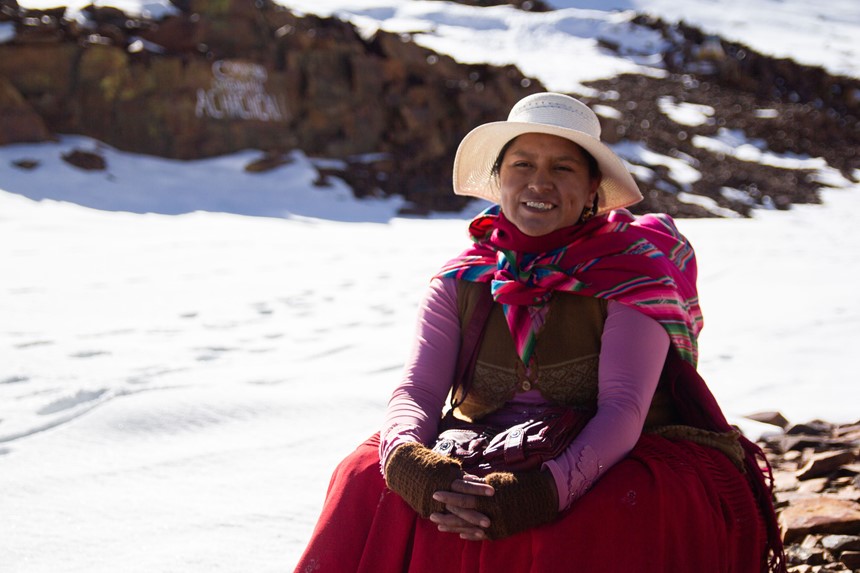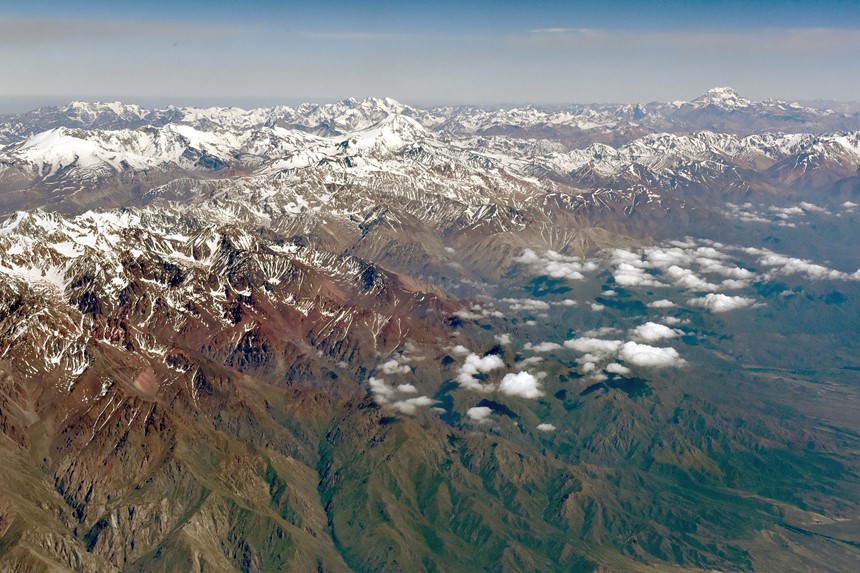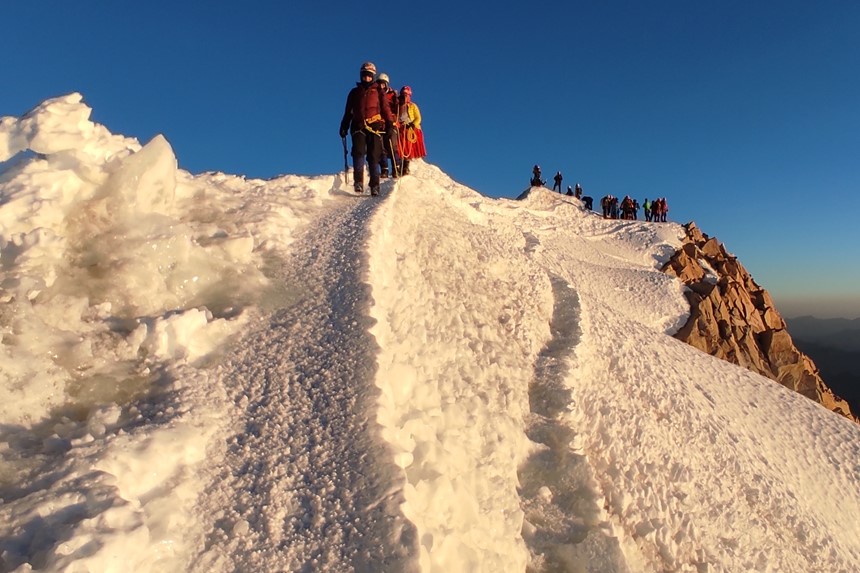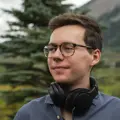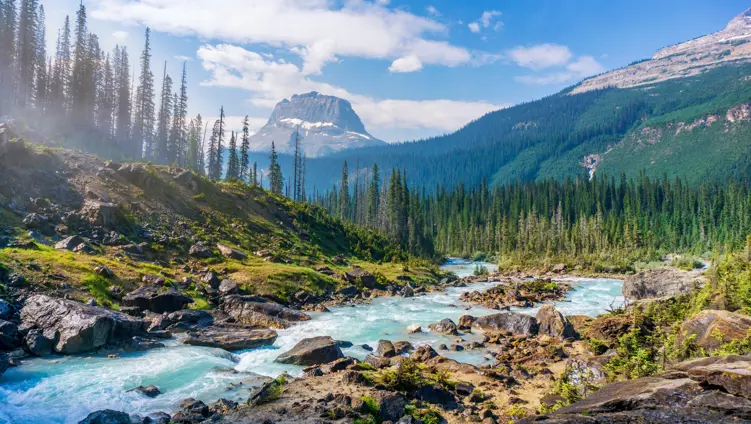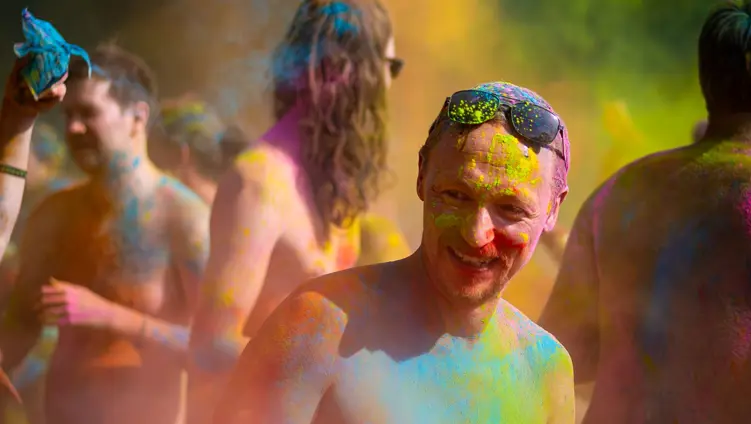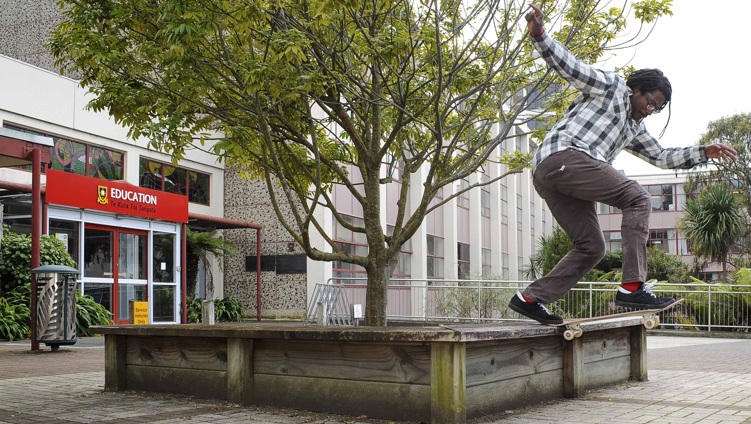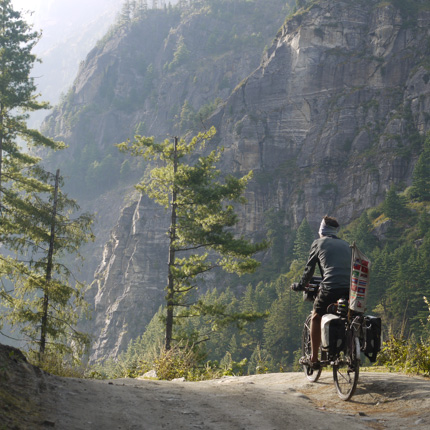Until then, the Cholitas Escaladoras continue to train, fundraise, and lead expeditions in pursuit of their Everest dream. But as they push towards their goal, change weighs heavily on their minds.
Elena now works as a mountain guide, leading tourists to the summits of the mountains she used to dream of climbing. She often guides tourists on Huayna Potosí, and notes that a lot has changed. During her first ascent in 2015, the summit was blanketed in a thick layer of snow and ice; now the summit and its approach is “just rock and ice.” As more snow and ice melts, Elena and other guides have to change their routes to avoid opening crevasses. Elena speculates that many glaciers will only last another five to ten years. “We need to take advantage of still having snow,” she says. Just like in Elena’s home mountains, Everest’s ice is melting too, making it more dangerous, and sometimes even impossible, to climb.
As the ice thaws and changes, conversations about racism and sexism in a colonised society are also changing, if at a more glacial pace. For one, the same men who once called their dreams crazy now support their climbing goals. Though they have gained social support, the situation of the Cholitas Escaladoras and other Aymara women remains complex: the struggle against racism and sexism is far from over. Nonetheless, the Cholitas Escaladoras are playing a role in changing long-held beliefs. And no matter their mountaineering success, they’re proud to be Indigenous women climbing the Achachilas, or peaks their ancestors have called home for thousands of years.
Elena isn’t certain that this social transition has happened soon enough to allow her to flamear her pollera on the top of the world before its ice is too unstable. But she’s confident that, one way or another, she’ll achieve her goals. “I’ve always lived in the countryside planting potatoes and raising llamas, and I’ve always had this dream. I know that one day I’ll make it happen.”
You can follow the Cholitas Escaladoras on Instagram at @cholitasescaladoras.
If you’d like to support Elena and the Cholitas Escaladoras’ dream of climbing Everest, you can donate to their GoFundMe here. Note that the fundraiser is currently in the author’s name, because GoFundMe won’t deposit into Bolivian bank accounts. They’re working on finding a solution.


